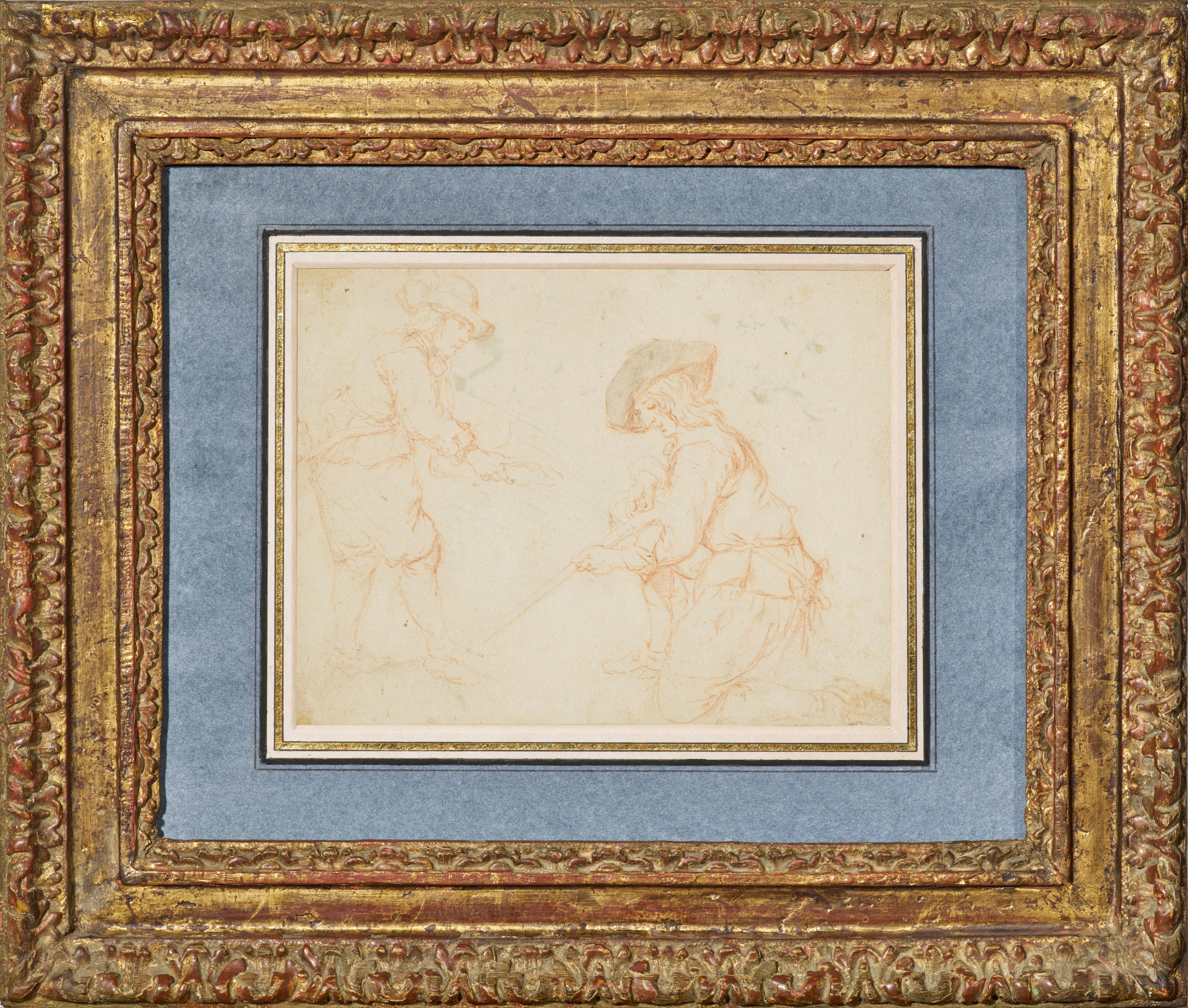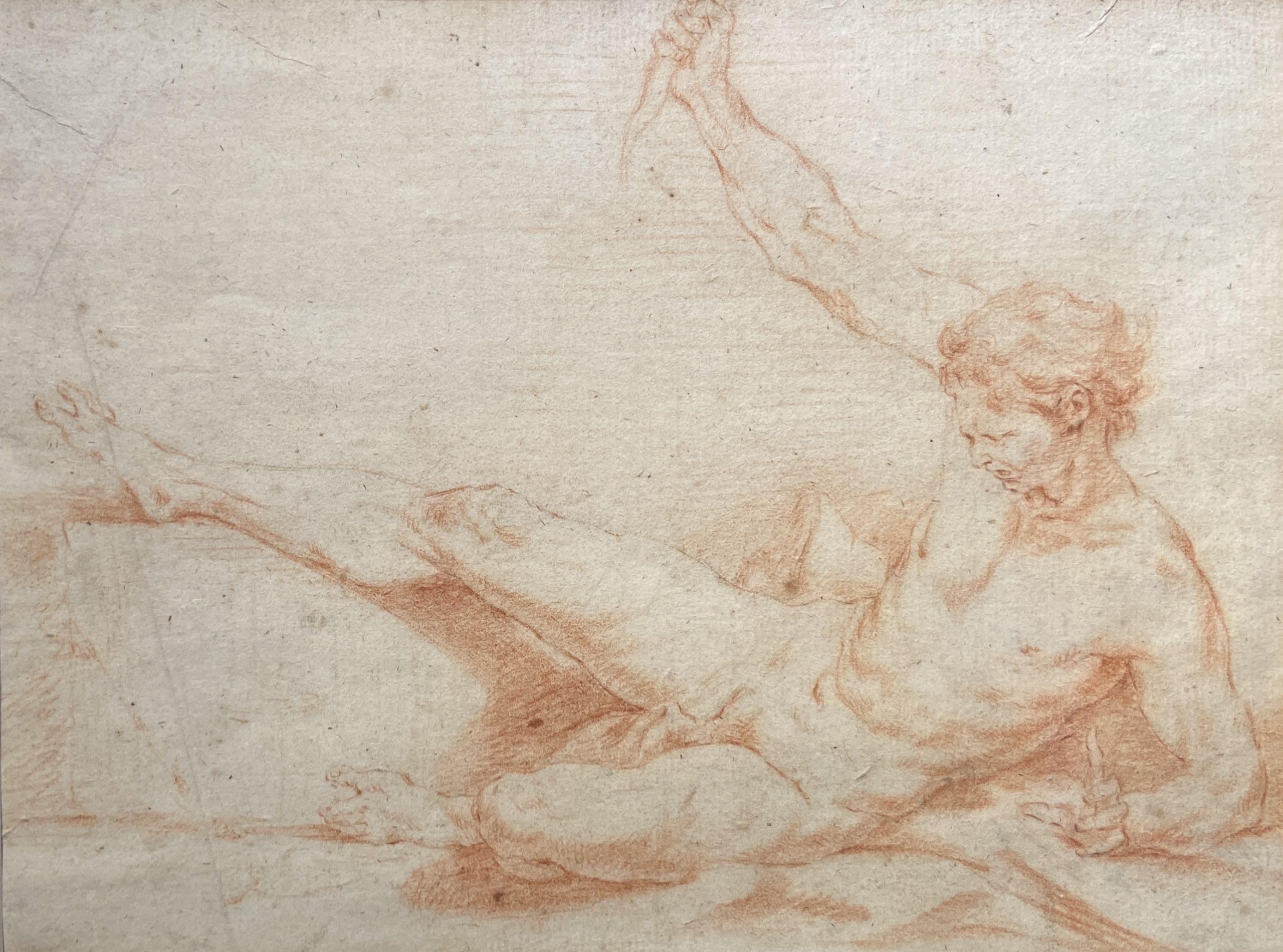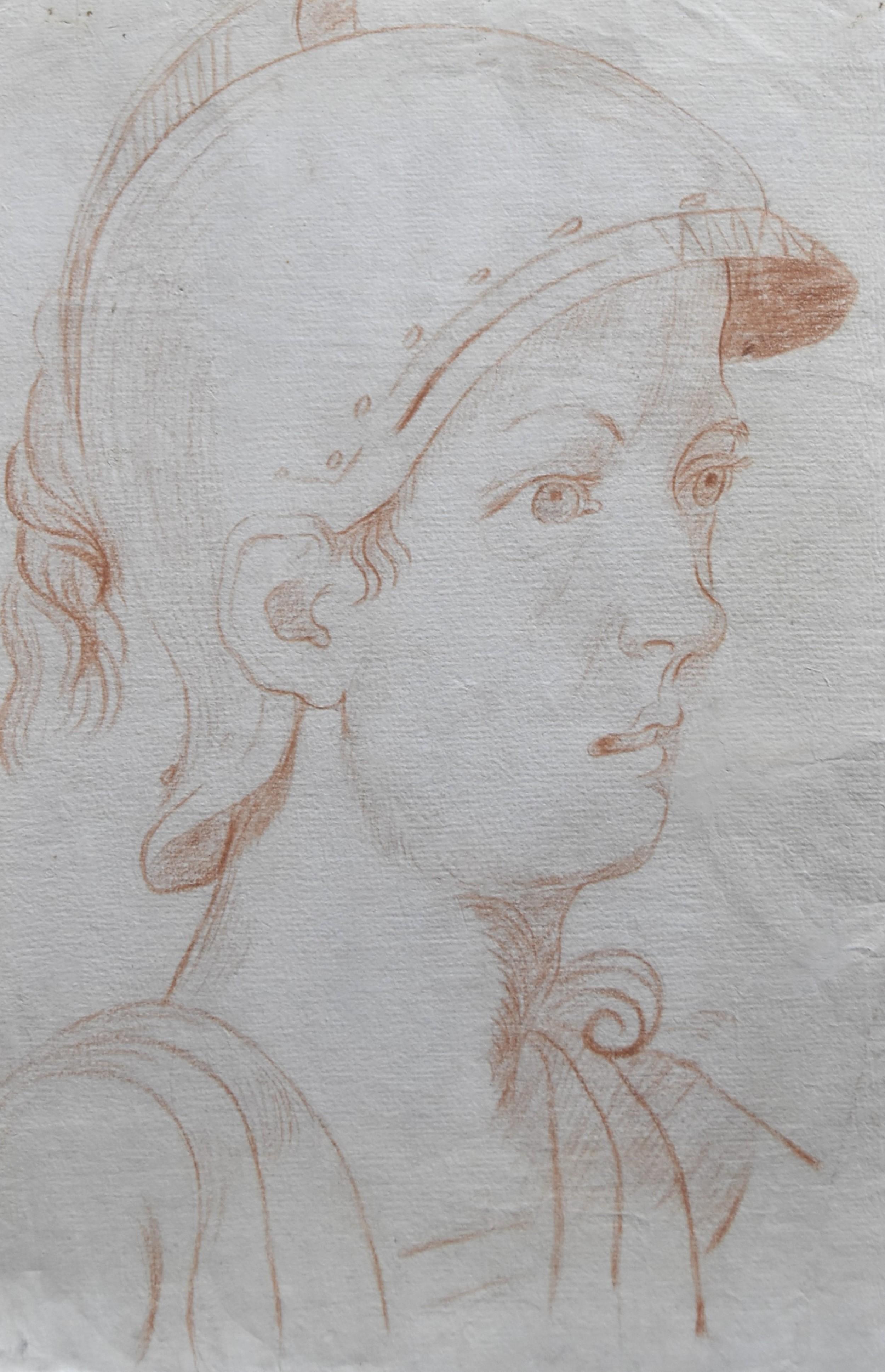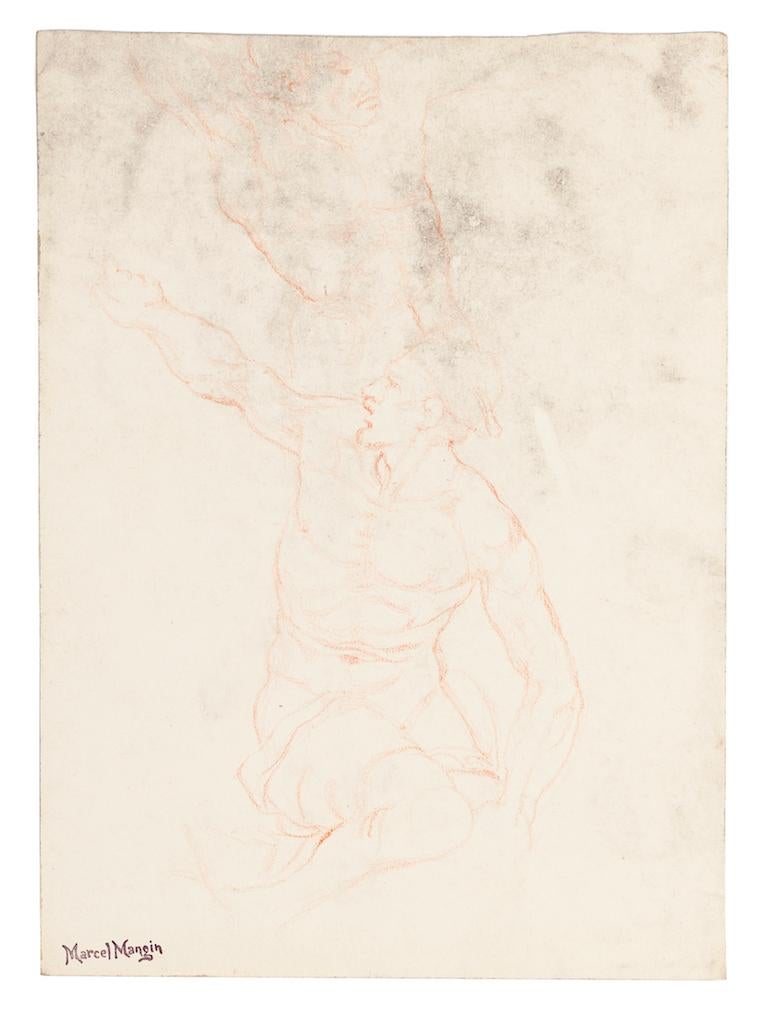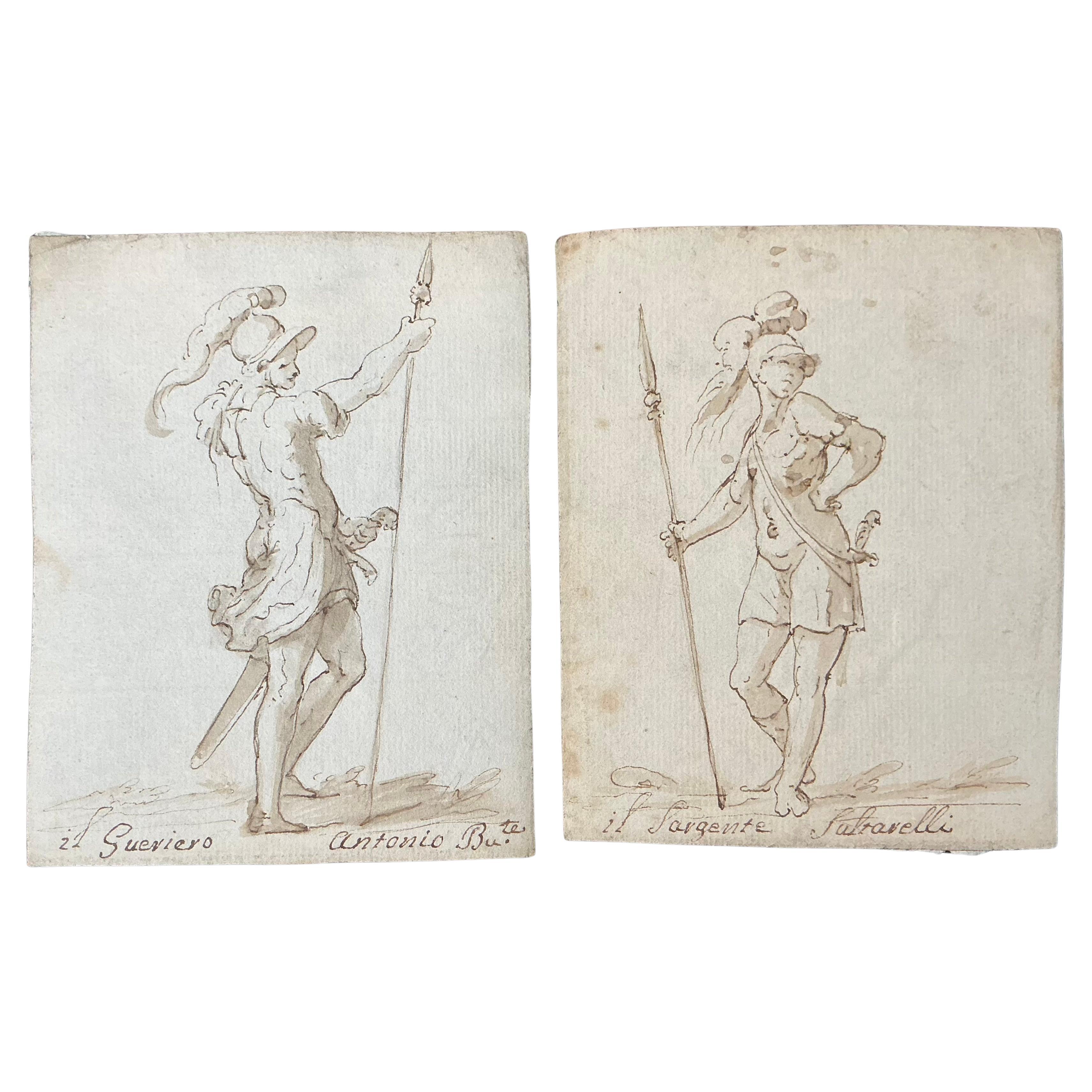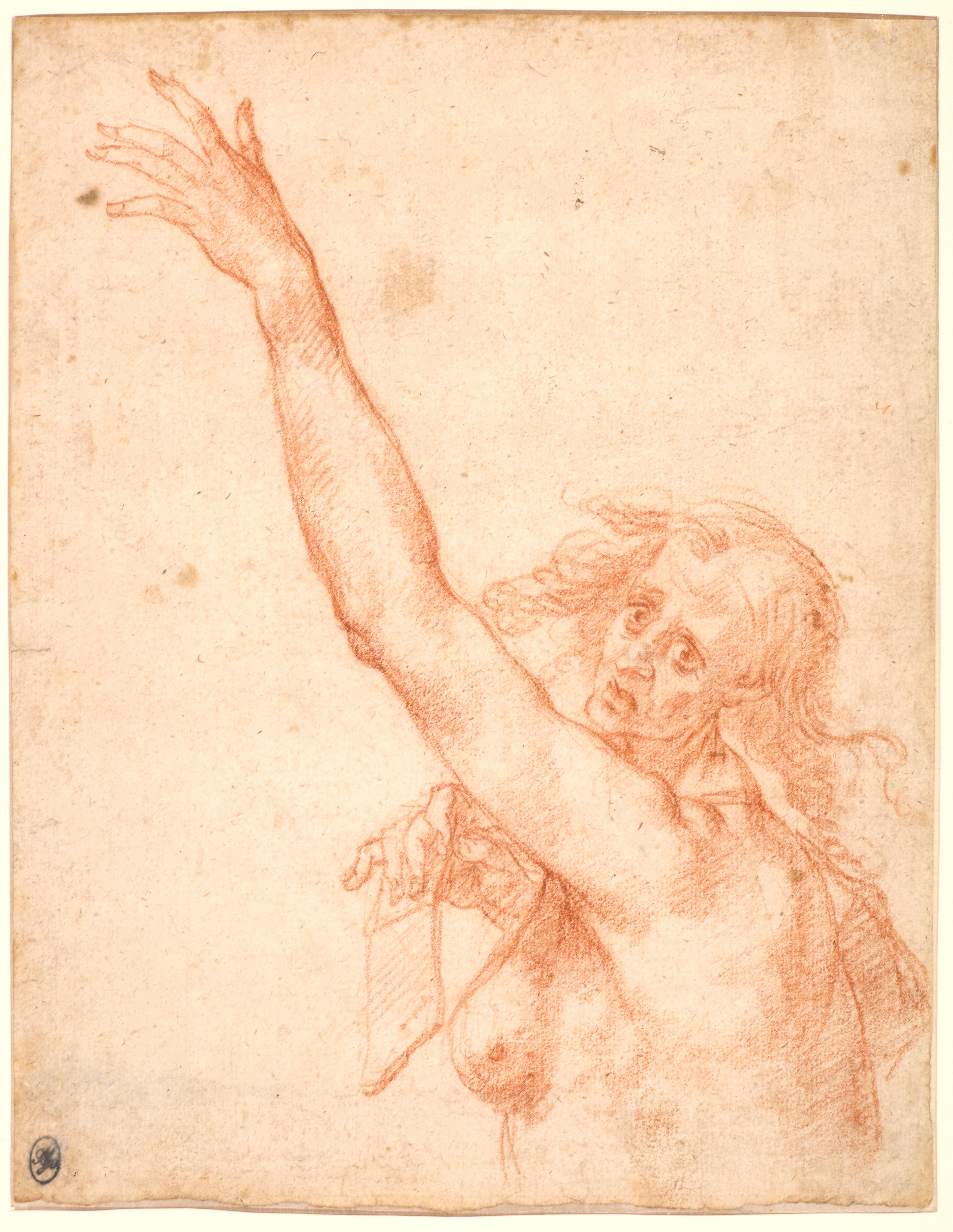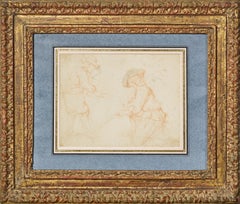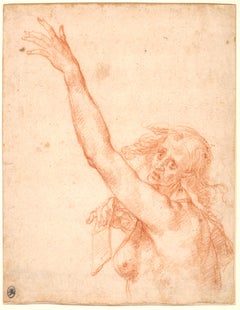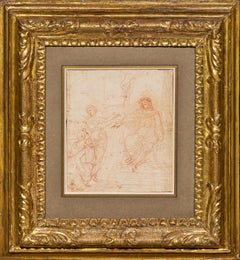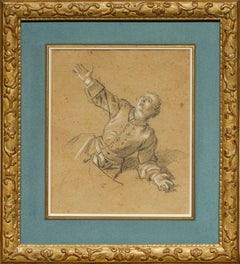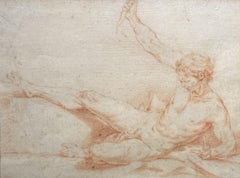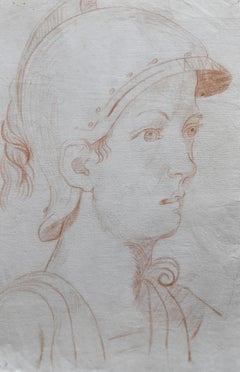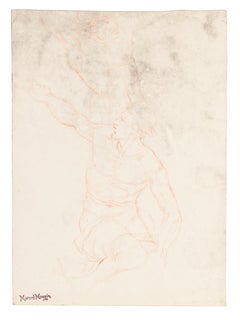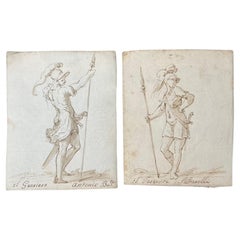Items Similar to Two military studies, a preparatory red chalk drawing by Jean-Baptiste Pater
Want more images or videos?
Request additional images or videos from the seller
1 of 9
Jean-Baptiste PaterTwo military studies, a preparatory red chalk drawing by Jean-Baptiste Pater1720-1730
1720-1730
$14,374.04
£10,748.55
€12,000
CA$19,803.84
A$21,598.87
CHF 11,441.62
MX$258,939.75
NOK 145,715.42
SEK 133,245.93
DKK 91,444.78
About the Item
As Florence Ingersoll-Smouse wrote in 1921 in her book devoted to Jean-Baptiste Pater, "a painter of the Fête galante, Pater is interesting both by his intimacy with Watteau, to whom many of his works are still attributed, and by his own value as an artist.” This sanguine, full of life and spontaneity, is typical of the preparatory studies made by the painter to be used later in the composition of his paintings.
1. Jean-Baptiste Pater, pupil and disciple of Antoine Watteau
Antoine Pater, Jean-Baptiste's father, belonged to the petty bourgeoisie of Valenciennes where he worked as a merchant-sculptor. His brother Jacques was a local painter who was probably involved in his nephew's training. Born on December 29, 1695, Jean-Baptiste Pater was first trained with Jean-Baptiste Guider, a local painter whose death in 1711 was probably the reason for Jean-Baptiste’s departure alongside Watteau, who was visiting Valenciennes. Watteau's difficult character led to their separation in 1713.
Back in Valenciennes, Jean-Baptiste Pater encountered difficulties with the powerful Corporation of Saint-Luke (to which he refused to belong) which forced him to return to Paris in 1718. He reconciled with Watteau shortly before his death (on July 18th 1721), inherited the commissions that Watteau had been unable to fulfil and completed some of his paintings.
Pater was accepted by the Académie Royale in 1725 but did not produce his reception painting The soldier’s revels until three years later. Throughout his brief career (he died at the age of forty on July 25th 1736), he mainly had a clientele of amateurs and received only one royal commission, shortly before his death.
2. Description of the drawing and related artworks
Pater had adopted his master Watteau's method of composition. His study drawings were carefully glued in a notebook and were used to animate his compositions.
His paintings sometimes suffer from a somewhat artificial composition, since the figures seem to be pasted one next to the other. This point has also been made about Watteau’s.
The theme of military scenes (which was at the time included in the genre of Fêtes galantes!) was one of Pater’s favourite subjects. Together with the Bathing Women, it constitutes the most personal aspect of his art. It is also one of the themes that distinguishes him most from Watteau: unlike the military scenes in which Watteau expresses the soldiers’ distress, everything is cheerful with Pater. We are in a resolutely theatrical universe in which a strong feminine presence removes all gloom...
The two figures we are presenting were quickly sketched on what appears to be a note sent to the artist - traces of writing can be seen on the back of the sheet, which was unfortunately glued on heavy paper. They were reused in two of the painter's compositions, both of which depict The March of the Troops.
The figure on the left, which represents a soldier in three-quarter view, leaning slightly towards his long rifle with its butt on the ground, can be found in a painting at the Gemäldegalerie in Berlin.
The figure on the right of our sanguine, which represents a soldier clutching his rifle with his folded arms, evokes one of the figures in a painting at the Metropolitan Museum in New York.
3. Framing
This red chalk is framed in a large Louis XV style gilded frame.
Main bibliographic reference :
Florence Ingersoll-Smouse - Pater - Les Beaux-Arts Paris 1921
- Creator:Jean-Baptiste Pater (1695 - 1736, French)
- Creation Year:1720-1730
- Dimensions:Height: 6.19 in (15.73 cm)Width: 7 in (17.78 cm)
- Medium:
- Movement & Style:
- Period:1720-1729
- Condition:Red chalk on paper 6 3/16’’x 7’’ (157 x 178 mm) - Framed 16 2/3’’ x 17 5/8’’ (42.3 x 44.7 cm) Inscribed in brown ink in the left margin "Mr. pater peintre" Gilded frame in the Louis XV style.
- Gallery Location:PARIS, FR
- Reference Number:1stDibs: LU1568211290042
About the Seller
5.0
Vetted Professional Seller
Every seller passes strict standards for authenticity and reliability
Established in 2020
1stDibs seller since 2021
10 sales on 1stDibs
Typical response time: <1 hour
- ShippingRetrieving quote...Shipping from: PARIS, France
- Return Policy
More From This Seller
View AllStudy for a Hunting Scene, a red chalk sketch attributed to Karel du Jardin
Located in PARIS, FR
We would like to thank Carolina Trupiano Kowalczyk for suggesting this attribution to Karel du Jardin after direct examination of the artwork. Her study of the drawing (in Italian), ...
Category
1650s Old Masters Figurative Drawings and Watercolors
Materials
Chalk, Ink, Laid Paper
Study of a Fate at mid-body, a red chalk attributed to Giovanni da San Giovanni
Located in PARIS, FR
This spectacular red chalk drawing depicts an elderly woman, her eyes bulging, her hand stretched out towards the sky. This disturbing character, who seems close to dementia, and the elongation of her arm with its Mannerist overtones, plunge us into the Florentine artistic milieu of the first half of the 17th century. The proximity of this drawing to some characters in the fresco in the Pitti Palace representing The Muses, Poets and Philosophers chased from Parnassus, the last masterpiece of Giovanni da San Giovanni, leads us to propose an attribution to this artist and a dating of around 1635-1636.
1. Giovanni da San Giovanni, the painter of contradiction
We take here the title of the monography dedicated to the artist by Anna Banti in 1977, which remains the reference book for this artist. The son of a notary, Giovanni Mannozzi, known as Giovanni da San Giovanni, abandoned his studies to go to Florence at the age of sixteen, where he entered the studio of Matteo Rosselli (1578 - 1650) around 1609 and enrolled in the Academy of Drawing Arts in 1612. Around 1615 he produced his first known works, mainly frescoes for the city's tabernacles. He became famous in Florence for his originality, combining an obsessive application to the study of drawing and the reading of poetry and history with a disheveled appearance. Between 1619 and 1620 he decorated the facade of the Antella Palace in Piazza Santa Croce, a decoration that still partly survives today.
The death of Cosimo II in 1621 put an end to the Florentine building activity and Giovanni da San Giovanni left for Rome to find other sponsors with the painter Francesco Furini...
Category
17th Century Old Masters Nude Drawings and Watercolors
Materials
Chalk
Studies for the Judgment of Solomon, a double-sided drawing by Simone Cantarini
Located in PARIS, FR
In this double-sided red chalk study, Simone Cantarini offers us a double reflection on the theme of the Judgment of Solomon. This sheet reveals his precise style and his sense of de...
Category
1640s Old Masters Figurative Drawings and Watercolors
Materials
Chalk, Laid Paper
Soldier begging for Mercy a preparatory study by Jean-Marc Nattier (1685 - 1766)
By Jean-Marc Nattier
Located in PARIS, FR
This rare drawing by Nattier is part of a set of preparatory studies executed in 1717 for one of the painter's first commissions, the painting commissioned by Tsar Peter I of Russia ...
Category
1710s Old Masters Figurative Drawings and Watercolors
Materials
Chalk
Study for « The Chinese Masquerade » by Jean-Baptiste Pierre (1714 - 1789)
By Jean-Baptiste Pierre
Located in PARIS, FR
Arriving in Rome in June 1735 as a resident at the Royal Academy, Pierre was unable to attend the Winter Carnival festivities of 1735, which he nevertheless immortalised in an engrav...
Category
1730s Old Masters Figurative Drawings and Watercolors
Materials
Graphite
Young Man with a Sword, a Fist on his Hip, a drawing by Cornelis Saftleven
Located in PARIS, FR
Black chalk and white highlights on paper (originally washed in blue)
Monogrammed and dated 1630 on the right
This drawing, executed in black chalk and enhanced with white brushwor...
Category
1630s Old Masters Portrait Drawings and Watercolors
Materials
Paper, Chalk
You May Also Like
The Death of Attis, 18th Century French Red Chalk Drawing, Greek Mythology
Located in London, GB
Red chalk on paper
Image size: 9 x 7 inches (23 x 17.75 cm)
Acid free mount
The Greek god Attis was the spouse of Cybele, the fertility goddess. He was from Phrygia, a kingdom in c...
Category
18th Century French School Figurative Drawings and Watercolors
Materials
Chalk
Italian School 18th century, An Ancient soldier in profile, red chalk on paper
Located in Paris, FR
Italian School 18th Century
An Ancient soldier in profile,
red chalk on paper
35 x 23.5 cm
in good condition, traces of folds in the lower right corner
Framed : 46.5 x 35.5 cm
This...
Category
1750s Baroque Portrait Drawings and Watercolors
Materials
Chalk
Study of Figures - Original Pastel Drawing by Marcel Mangin - 20th Cent
By Marcel Mangin 1
Located in Roma, IT
Study of Figure is original drawings on ivory paper, realized by Marcel Mangin (French, 1852 - 1915), with the stamp of artist "Marcel Mangin" on the low...
Category
20th Century Figurative Drawings and Watercolors
Materials
Pastel
Pair of Italian Old Master Drawings of Soldiers
Located in Bradenton, FL
18th Century Italian Old Master Drawings of Soldiers. These are fine, small illustrations done in brown ink with wash on paper that resemble Old Master figure studies, each depicting...
Category
Antique 18th Century Italian Baroque Drawings
Materials
Paper
$1,650 / set
Gentlemen - Original Drawing in Pencil by Eugène Giraud - Late 19th Century
By Eugène Giraud
Located in Roma, IT
Gentlemen is an Original Drawing in pencil realized by Eugène Giraud in the Late 19th Century.
Applied on a Cardboard, included a blue Passepartout: 33 x 41 cm.
Good conditions.
T...
Category
Late 19th Century Modern Figurative Drawings and Watercolors
Materials
Pencil
Soldiers - Original Pencil Drawing by an Unknown French Artist - Early 1900
Located in Roma, IT
Soldiers is an original artwork realized by an Anonymous French artist in the first decades of the XX Century.
Original pencil drawing. The sheet is drawed also on the back.
Mint conditions.
This work is a representation of several soldiers: a fresh and rapid sketch representing two male figures with the typical military clothes...
Category
Early 20th Century Modern Figurative Drawings and Watercolors
Materials
Pencil
More Ways To Browse
Picasso Screen Print
Raoul Dufy Etchings
Rauschenberg Roci
Robert Meyer
Ruth Boaz
Sarajevo Poster
Shio Kusaka
Signed Goya
Suite De 180 Dessins De Picasso
The 19th Century Trash Can
Tom Wesselmann Signed
Tool Posters
Vintage Cardinal Print
70s Pop Art
Aaron Douglas
Alfons Mucha
American Brilliant Cut Glass Plate
Andy Warhol Announcement Card
